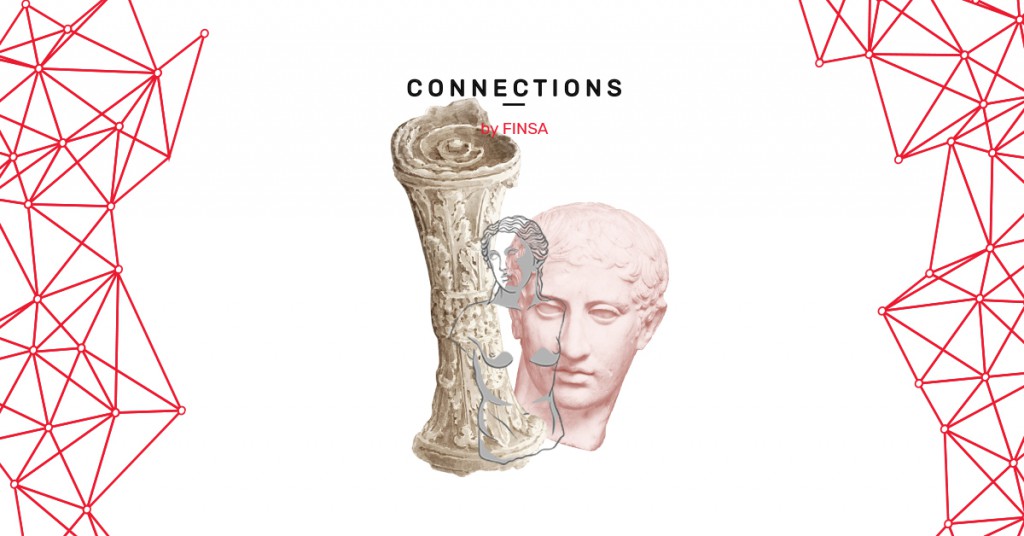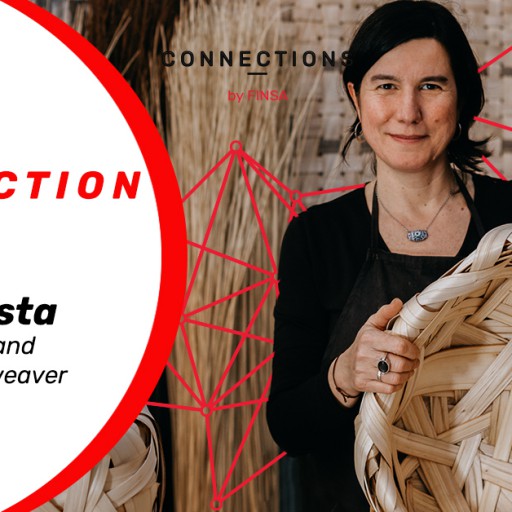The ancient and venerable civilisations of Greece and Rome, the birthplaces of our own, will never go out of style. We have inherited many important things from them such as democracy, law, theatre, philosophy, the Olympic Games, as well as the artistic canon. The Greco-Roman style is part of our cultural and historical DNA, and it often finds its way out of museums and into our homes.

Its essence has always been present in our lives. Just take a look around: classical engineering and architecture, especially that of Ancient Rome, continues to be a major reference point. Its imposing, brilliant legacy found in characteristics such as monumentality, the spirit of practicality, and dynamism in its arches and vaults, are found in aqueducts, roadways, amphitheatres, and villas that remain intact and immune to the passing of time. All of this was built using stone and concrete. That’s right: one of the most frequently used building materials of today was also a favourite of the Romans over two thousand years ago. They called it caementicium and, as we know, it was very durable. They also used another material that humans have a natural affinity for: wood.
Vitruvius and Pliny the Elder: champions of wood
Wood was definitely one of their favourite materials. Vitruvius, the first great Roman architect, born in the 1st century BC, contemporary of Julius Caesar, creator of the man with perfect proportions that Leonardo Da Vinci would copy centuries later, designer of palaces, basilicas, roads, and even sewage systems, dedicated a whole chapter to wood in his famous work De Architectura, analysing nature and the qualities of wood sourced from different types of trees such as oak, elm, polar, cypress, fir, cedar, box, holm oak, and ebony, as well as their different uses. Writer and soldier Pliny the Elder later supported this theory about the significant role that wood had to play in Rome’s progress. He stated that “wood has thousands of uses and life would not be possible without it”. With this, Pliny demonstrated its value for every aspect of daily life, from construction to heating systems (that’s right, patrician houses had central heating), naval construction, and metallurgy.
The Ikea of the time
Ancient Romans actually bought wood from foreign lands to build their empire. There were already some references to it, but a few years ago a scientific study confirmed the theory that the ancient Romans had a huge need for wood and developed an extraordinary logistical system to bring it from places all over their empire in order to build their buildings. A bit of ancient Ikea, if you think about it.
The study was undertaken by a group of professors at the Consiglio Nazionale delle Richerche, led by Mauro Bernabei, and published in PLSO One, an American science magazine that is accessible to the public on the Public Library of Science. It began as an extension of Rome’s metro between 2014 and 2016, which led to the discovery of 24 large planks of oak wood that had once been part of the base of a portico belonging to a vast and opulent property.
The scientific community analysed 13 of them and discovered that the wood had been cut between 40 and 60 AD from trees in the Jura mountains in northwest France, some 1,700 kilometres from Rome. An incredible journey was undertaken in order to transport them: they were floated along the Saone and the Rhone on rafts and crossed the Mediterranean before arriving in Rome via the Tiber. A marvellous achievement for the time.
The way that Greeks and then Romans used wood is still relevant today. What did our ancestors use it for? One of the possible uses was for what the Romans called opus craticium, a construction system consisting of a structure of wooden beams that, when put together, created a framework with spaces that were filled with other materials such as bricks, adobe, or masonry. Evolved versions of this technique can still be found today.
Foundations and ceilings
Patrician houses and villas belonging to the upper classes usually contained many different types of wood that were often used for decoration along with other precious materials such as metals, marble, and ivory. The preferred wood for construction seems to have been fir. According to Vitruvius, it was because its wood is lightweight and its trunk is large with few irregularities. This has been confirmed by the ruins found in Pompeii and Herculaneum.
The second most commonly used wood was oak, which is heavier with a more irregular trunk, but also stronger and more durable, making it the perfect choice for foundations. However, it was less suitable for ceiling beams, which were usually vaulted, thus requiring a certain amount of flexibility.
Greco-Roman style furniture in 2022
Wood was also the basis for Greco-Roman furniture and its influence has remained constant over time. Pieces such as chairs, stools, tables, and sideboards, as well as decorative elements including busts, sculptures, columns, and vessels are making a comeback in today’s design, but with a new air about them. Pinterest’s 2022 trend report, which is put together using global search data from October 2019 to September 2021, indicates that there will be a nostalgic revival of classic antiquity: people are inspired by the Hellenic and Roman past and are investing in pieces in this style to decorate their homes, sometimes with huge contrasts.
Ver esta publicación en Instagram
Here are a few examples:
Elegant and functional chairs and stools
Greece produced a huge range of decorative furniture, usually made out of cedar, pine, or cypress wood. It’s true that the influence of Egyptian design was more obvious early on, with the chair legs in the shape of animals and very unergonomic structures, but over time these elements were replaced by other rectangular ones and better shapes that were better suited to the human body. One distinct piece by Greek designers was the chair known as klismos, which had curved legs and a light, elegant design with a slightly inclined back. The chair was so comfortable that it was the most copied design in the 18th century and is still around today. Dragonnette makes on in methacrylate:
Ver esta publicación en Instagram
Homes were a little more sophisticated and comfortable in the Roman empire. A type of divan, the triclinio, was one of the most popular pieces of furniture and could fit up to three people who could use it to eat while lying down and rest among cushions and pillows. This chaise longue owned by Gwyneth Paltrow is one modern-day example:
Ver esta publicación en Instagram
Roman baths were also filled with all sorts of creature comforts. This version is also found in Paltrow’s house:
Ver esta publicación en Instagram
Tables (three-legged in Greece and usually four-legged in Rome), were common wooden pieces in the houses of our ancestors, as well as chests of drawers, sideboards, and large chests. They were just like the ones of today, and were used to organise household equipment, clothes, and shoes, which were placed on shelves.
Ver esta publicación en Instagram
Ornamental beauty
Rooms in Roman homes were usually quite large and needed different decorative elements to make them more attractive. Busts and statues were some of the featured pieces. Nobles included likenesses of themselves, gods, and emperors in their rooms and hallways. This is another 2022 trend. Artist Sergio Roger took it to the next level by sculpting in the style of the classics using the unlikely material of linen. Busts and columns made of fabric were exhibited at the end of last year at Christie’s auction house:
Ver esta publicación en Instagram
The same can be said of columns. The old and the new have come together in this piece by New York designer Patrick Mele:
Ver esta publicación en Instagram
They are also reflected in the Ionic style on high-quality painted paper like this one from English brand Hovia, which explores the classical trend and brings the oldest style of decoration straight into the 21st century:
Ver esta publicación en Instagram
Different types of walls
Walls were also something that Romans used to beautify their homes. While mosaics often decorated the floor, walls would usually be painted with frescos featuring geometric patterns or mythological scenes. This trend is still around today, albeit in a more subtle way:
Ver esta publicación en Instagram
There are some bolder examples. Chilean American designer Juan Pablo Molyneux’s The Dining Room features walls that are completely covered in classical scenes:
Ver esta publicación en Instagram
Bowls, jugs, plates, vessels, and craters could be found all over the house. These objects inspired by classical beauty continue to decorate our homes today, although there are know bolder pieces within the trend. Italian designer Antonio Aricò did this with pumpkins, transforming them into amphoras for celebrating Halloween:
Ver esta publicación en Instagram
Haute couture
Greco-Roman trends have also found their way into fashion. We saw evidence of it at the latest autumn-winter collection by Louis Vuitton. Their star designer Nicolas Ghesquière was inspired by classical art and mythology. Diana, Minerva, and Venus were stamped all over bags, suitcases, shoes, t-shirts, shirts, and coats.
Ver esta publicación en Instagram
Graffiti with a prize
Where Romans built bridges, aqueducts, and amphitheatres, we can now find new references to the classics. The winner of the world’s best mural 2021, a prize awarded by the prestigious Street Art Cities, was graffiti by Galician artist Diego As, who decorated the part wall of a building in front of the Muralla de Lugo with an imposing Julius Cesar that looks us directly in the eyes from a past that is coming back with a vegenance.
Ver esta publicación en Instagram
Will you try out the Greco-Roman style in your interior design projects?



